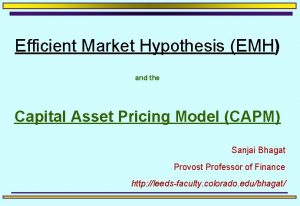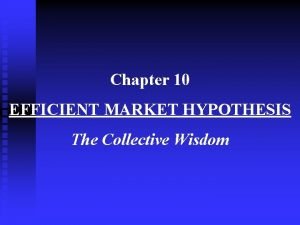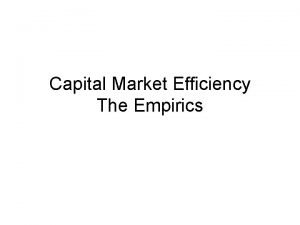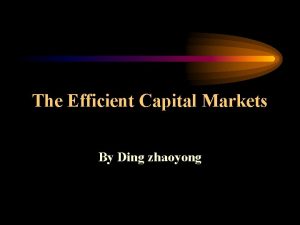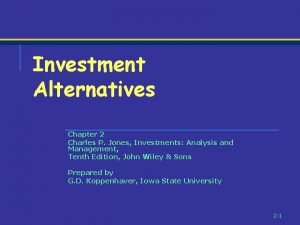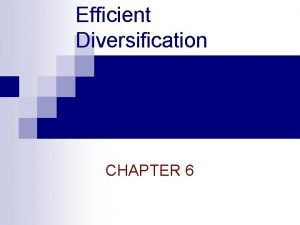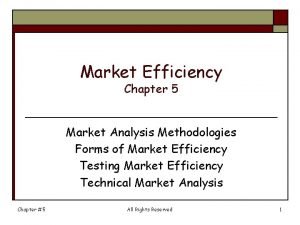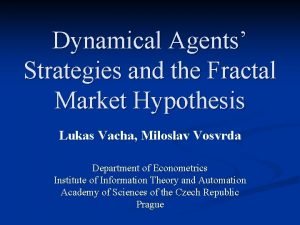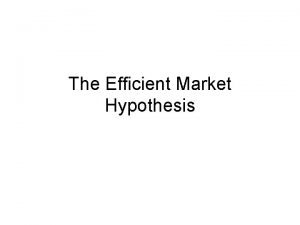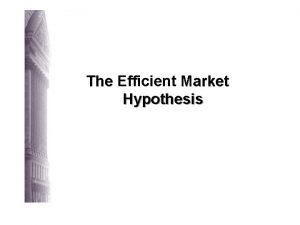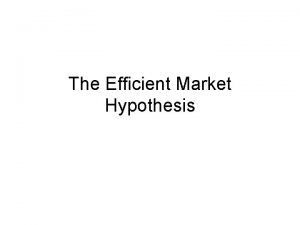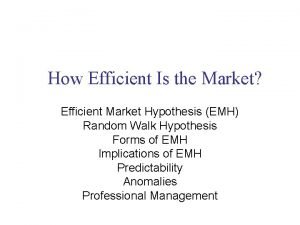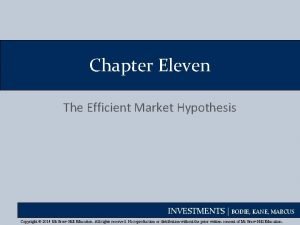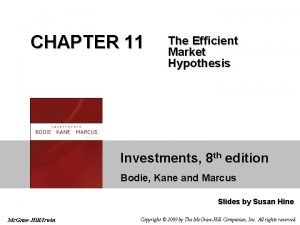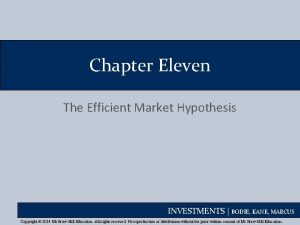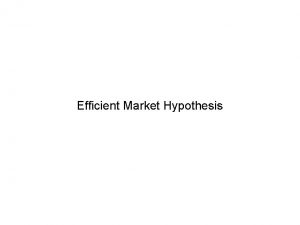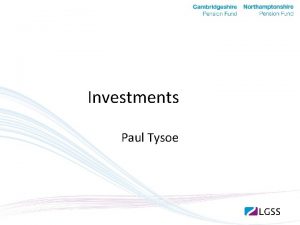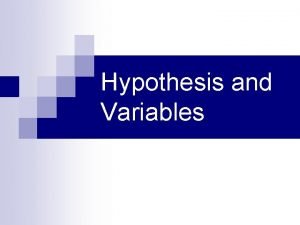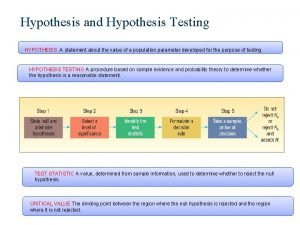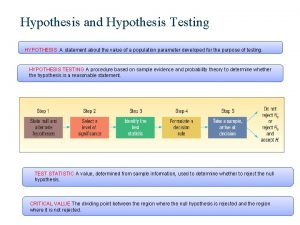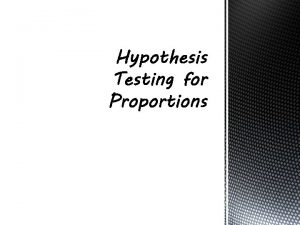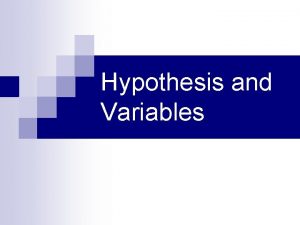CHAPTER 11 The Efficient Market Hypothesis Investments 8




























- Slides: 28

CHAPTER 11 The Efficient Market Hypothesis Investments, 8 th edition Bodie, Kane and Marcus Slides by Susan Hine Mc. Graw-Hill/Irwin Copyright © 2009 by The Mc. Graw-Hill Companies, Inc. All rights reserved.

Efficient Market Hypothesis (EMH) • Do security prices reflect information ? • Why look at market efficiency? – Implications for business and corporate finance – Implications for investment 11 -2

Figure 11. 1 Cumulative Abnormal Returns Before Takeover Attempts: Target Companies 11 -3

Figure 11. 2 Stock Price Reaction to CNBC Reports 11 -4

EMH and Competition • Stock prices fully and accurately reflect publicly available information • Once information becomes available, market participants analyze it • Competition assures prices reflect information 11 -5

Versions of the EMH • Weak • Semi-strong • Strong 11 -6

Types of Stock Analysis • Technical Analysis - using prices and volume information to predict future prices – Weak form efficiency & technical analysis • Fundamental Analysis - using economic and accounting information to predict stock prices – Semi strong form efficiency & fundamental analysis 11 -7

Active or Passive Management • Active Management – Security analysis – Timing • Passive Management – Buy and Hold – Index Funds 11 -8

Market Efficiency & Portfolio Management Even if the market is efficient a role exists for portfolio management: • Appropriate risk level • Tax considerations • Other considerations 11 -9

Event Studies • Empirical financial research that enables an observer to assess the impact of a particular event on a firm’s stock price • Abnormal return due to the event is estimated as the difference between the stock’s actual return and a proxy for the stock’s return in the absence of the event 11 -10

How Tests Are Structured • Returns are adjusted to determine if they are abnormal Market Model approach a. rt = at + brmt + et (Expected Return) b. Excess Return = (Actual - Expected) et = rt - (a + br. Mt) 11 -11

Are Markets Efficient • Magnitude Issue • Selection Bias Issue • Lucky Event Issue 11 -12

Weak-Form Tests • Returns over the Short Horizon – Momentum • Returns over Long Horizons 11 -13

Predictors of Broad Market Returns • Fama and French – Aggregate returns are higher with higher dividend ratios • Campbell and Shiller – Earnings yield can predict market returns • Keim and Stambaugh – Bond spreads can predict market returns 11 -14

Semistrong Tests: Anomalies • • • P/E Effect Small Firm Effect (January Effect) Neglected Firm Effect and Liquidity Effects Book-to-Market Ratios Post-Earnings Announcement Price Drift 11 -15

Figure 11. 3 Average Annual Return for 10 Size-Based Portfolios, 1926 – 2006 11 -16

Figure 11. 4 Average Return as a Function of Book-To-Market Ratio, 1926– 2006 11 -17

Figure 11. 5 Cumulative Abnormal Returns in Response to Earnings Announcements 11 -18

Strong-Form Tests: Inside Information • The ability of insiders to trade profitability in their own stock has been documented in studies by Jaffe, Seyhun, Givoly, and Palmon • SEC requires all insiders to register their trading activity 11 -19

Interpreting the Evidence • Risk Premiums or market inefficiencies— disagreement here – Fama and French argue that these effects can be explained as manifestations of risk stocks with higher betas – Lakonishok, Shleifer, and Vishney argue that these effects are evidence of inefficient markets 11 -20

Figure 11. 6 Returns to Style Portfolio as a Predictor of GDP Growth 11 -21

Interpreting the Evidence Continued • Anomalies or Data Mining • The noisy market hypothesis • Fundamental indexing 11 -22

Stock Market Analysts • Do Analysts Add Value – Mixed evidence – Ambiguity in results 11 -23

Mutual Fund Performance • Some evidence of persistent positive and negative performance • Potential measurement error for benchmark returns – Style changes – May be risk premiums • Hot hands phenomenon 11 -24

Figure 11. 7 Estimates of Individual Mutual Fund Alphas, 1972 - 1991 11 -25

Table 11. 1 Performance of Mutual Funds Based on Three-Index Model 11 -26

Figure 11. 8 Persistence of Mutual Fund Performance 11 -27

Table 11. 2 Two-Way Table of Managers Classified by Risk-Adjusted Returns over Successive Intervals 11 -28
 Evidence supporting efficient market hypothesis
Evidence supporting efficient market hypothesis Efficient market hypothesis
Efficient market hypothesis Efficient market hypothesis
Efficient market hypothesis Random walk efficient market hypothesis
Random walk efficient market hypothesis The efficient market hypothesis suggests that _______.
The efficient market hypothesis suggests that _______. Productively efficient vs allocatively efficient
Productively efficient vs allocatively efficient Productively efficient vs allocatively efficient
Productively efficient vs allocatively efficient Productively efficient vs allocatively efficient
Productively efficient vs allocatively efficient Productively efficient vs allocatively efficient
Productively efficient vs allocatively efficient Allocative efficiency vs productive efficiency
Allocative efficiency vs productive efficiency Market leader market challenger market follower
Market leader market challenger market follower Marketing targeting and positioning
Marketing targeting and positioning Cost efficient capital market
Cost efficient capital market Characteristics of an efficient market
Characteristics of an efficient market Efficient elements alternative
Efficient elements alternative Informationally efficient
Informationally efficient Null hypothesis
Null hypothesis Null hypothesis vs alternative hypothesis
Null hypothesis vs alternative hypothesis Alternative hypothesis
Alternative hypothesis Weakness of protoplanet hypothesis
Weakness of protoplanet hypothesis Chapter 17 intermediate accounting
Chapter 17 intermediate accounting Under ifrs the presumption is that equity investments are
Under ifrs the presumption is that equity investments are Chapter 2 investments
Chapter 2 investments Chapter 11 real estate and other investments
Chapter 11 real estate and other investments Portfolio diversification
Portfolio diversification Efficient chapter 5
Efficient chapter 5 Fractal market hypothesis
Fractal market hypothesis Equity accounted investments
Equity accounted investments Financial investment analysis
Financial investment analysis


